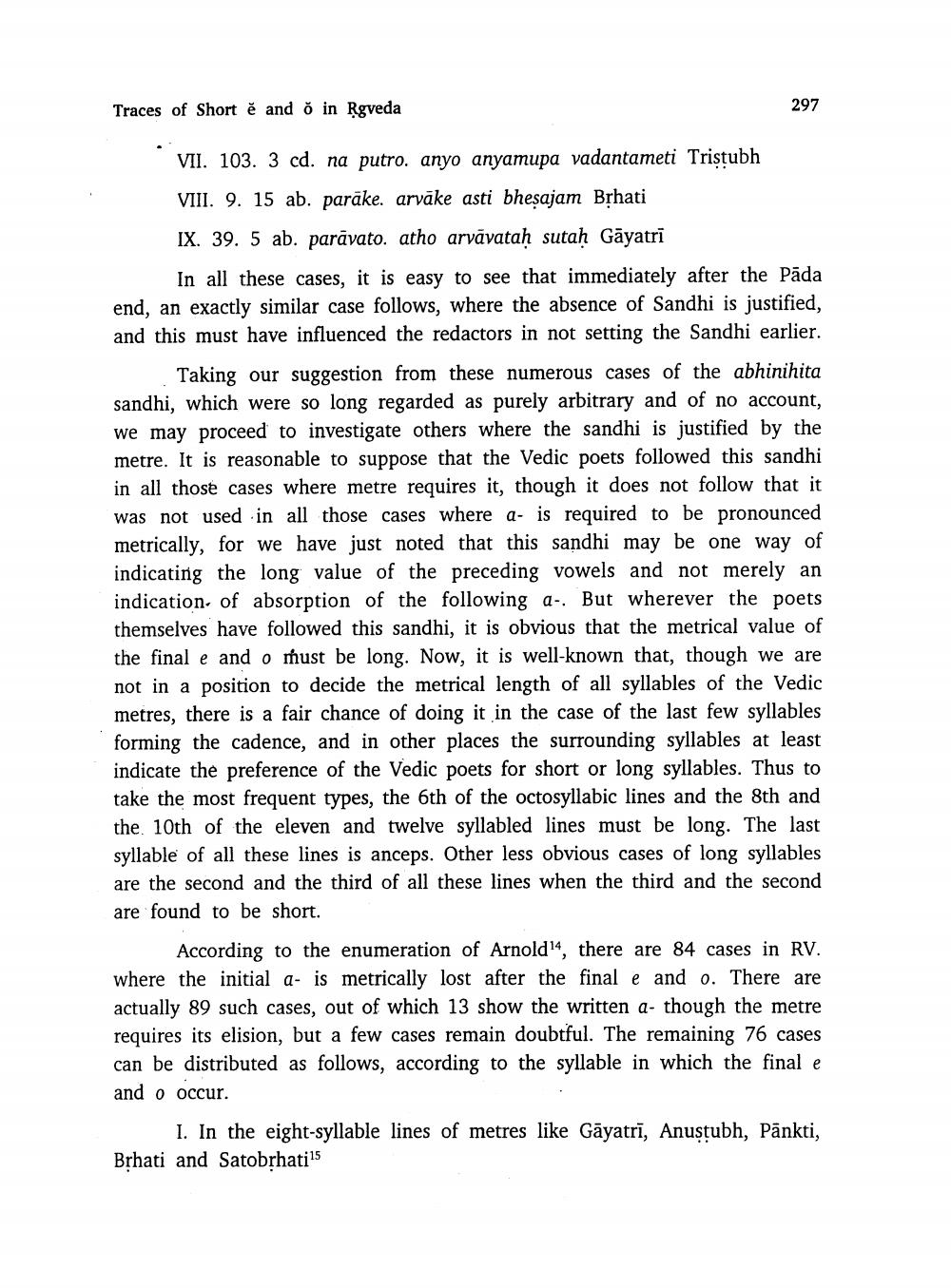________________
Traces of Short ĕ and ŏ in Ṛgveda
297
VII. 103. 3 cd. na putro. anyo anyamupa vadantameti Tristubh
VIII. 9. 15 ab. parake. arväke asti bheṣajam Brhati
IX. 39. 5 ab. paravato. atho arvavataḥ sutaḥ Gayatri
In all these cases, it is easy to see that immediately after the Päda end, an exactly similar case follows, where the absence of Sandhi is justified, and this must have influenced the redactors in not setting the Sandhi earlier.
Taking our suggestion from these numerous cases of the abhinihita sandhi, which were so long regarded as purely arbitrary and of no account, we may proceed to investigate others where the sandhi is justified by the metre. It is reasonable to suppose that the Vedic poets followed this sandhi in all those cases where metre requires it, though it does not follow that it was not used in all those cases where a is required to be pronounced metrically, for we have just noted that this sandhi may be one way of indicating the long value of the preceding vowels and not merely an indication of absorption of the following a-. But wherever the poets themselves have followed this sandhi, it is obvious that the metrical value of the final e and o must be long. Now, it is well-known that, though we are not in a position to decide the metrical length of all syllables of the Vedic metres, there is a fair chance of doing it in the case of the last few syllables forming the cadence, and in other places the surrounding syllables at least indicate the preference of the Vedic poets for short or long syllables. Thus to take the most frequent types, the 6th of the octosyllabic lines and the 8th and the 10th of the eleven and twelve syllabled lines must be long. The last syllable of all these lines is anceps. Other less obvious cases of long syllables are the second and the third of all these lines when the third and the second are found to be short.
According to the enumeration of Arnold", there are 84 cases in RV. where the initial a- is metrically lost after the final e and o. There are actually 89 such cases, out of which 13 show the written a though the metre requires its elision, but a few cases remain doubtful. The remaining 76 cases can be distributed as follows, according to the syllable in which the final e and o occur.
I. In the eight-syllable lines of metres like Gayatrī, Anuṣṭubh, Pānkti, Bṛhati and Satobṛhati




